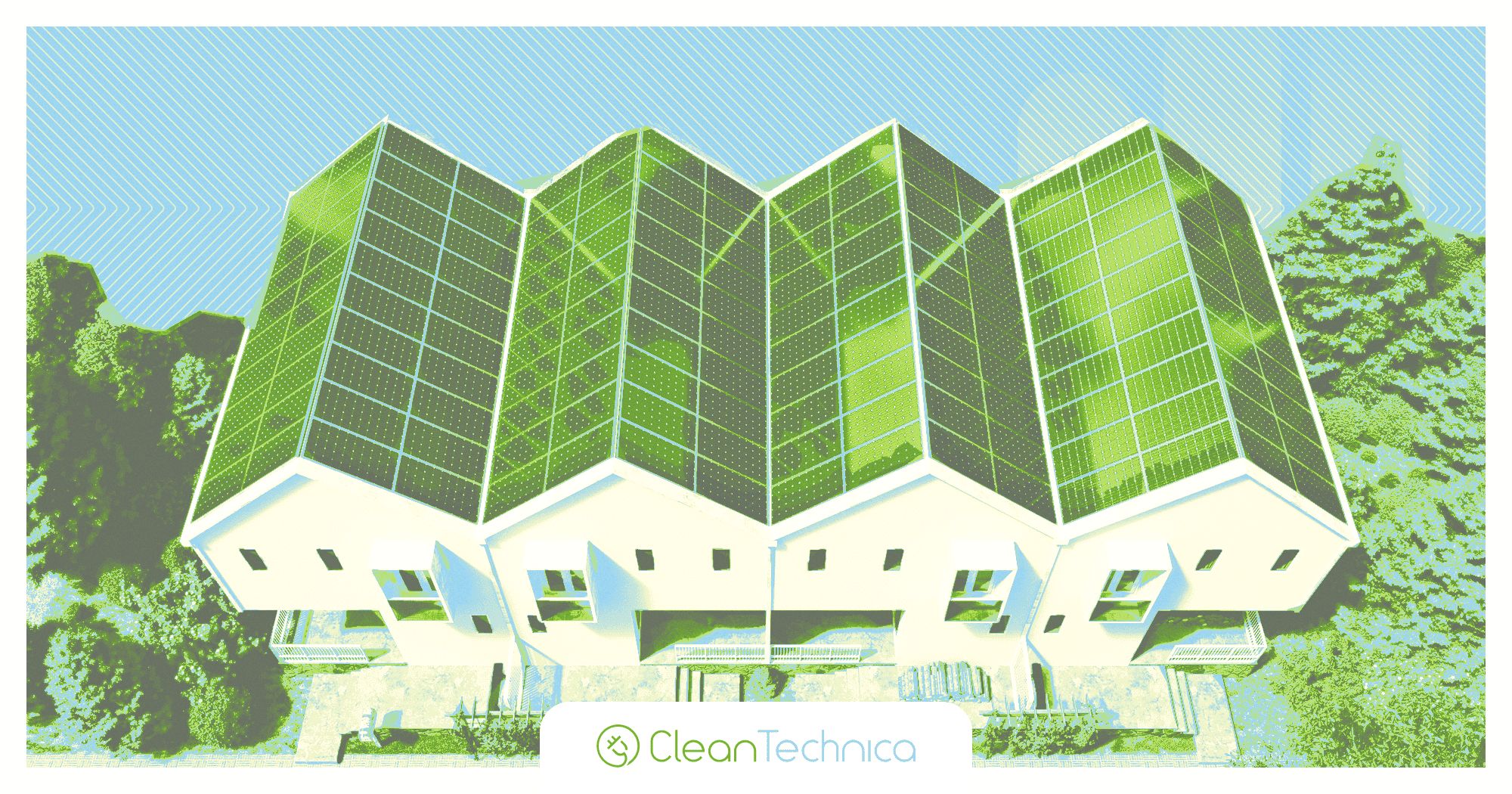US Treasury Announces New Solar Tax Credit Guidance
Unless you have been living under a rock lately, you are probably aware that a titanic struggle is taking place in the US over solar power. On the one hand, the federal government wants to speed up the installation of solar power plants to help lower carbon emissions from thermal generating plants. To accomplish that goal, there are many incentives included in recent federal legislation, like the Inflation Reduction Act, that are worth billions of dollars.
On the other hand, the government wants to encourage domestic production and protect American manufacturers from overseas competitors who may be using forced labor and government subsidies to make solar cells and panels that they sell for less than the cost of manufacturing. It’s a delicate dance, one that is fraught with geopolitical implications.
The nub of it all is that China is currently the dominant supplier of solar cells and panels in the world and there are many complaints it is using its advantage to put other manufacturers — particularly those located in the US — out of business.
Last year, the US trade representative slapped higher tariffs on solar panels from China after a complaint was filed by Auxin Solar. The Biden administration responded by putting a two-year pause on those higher tariffs, but the Senate recently voted to overturn that pause.
All this turmoil has had a negative effect on the US solar industry. While the IRA has encouraged new investments in solar cell and panel production in the United States, those new factories won’t spring up overnight. In the meantime, solar developers are shelving plans to build new solar installations because they don’t know how much those critical components will cost. There’s nothing business hates more than regulatory uncertainty, particularly when decisions made in Washington, DC, can determine whether a project is profitable or loses money.
Treasury Speaks On Solar
Politicians may thunder and declaim, but administrative agencies make the rules and regulations that translate political policies into action. This week, the US Treasury Department issued new rules that will determine who is eligible for production credits and tax incentives regarding solar cells and panels.
Reuters reports that on May 12, the Treasury Department clarified that developers of solar energy projects can claim a new subsidy for facilities built with American-made products even if the system’s panels contain cells made entirely with Chinese materials. The announcement appears to undercut the stand the US trade representative took last year after Auxin Solar filed its petition for trade protection.
The rules about how companies can claim a new tax credit for clean energy projects built with domestic equipment represent a compromise between conflicting proposals by solar project developers, who rely on cheap imports to keep costs low, and manufacturers who want to expand and compete with China to supply the US market.
Investors reacted favorably to the news, seeing it as giving a boost to companies with existing or future plans for US factories. Shares of First Solar rose 26% following the announcement, while shares of inverter maker Enphase Energy increased more than 7%.
The Inflation Reduction Act signed into law last year offers billions of dollars in tax credits for facilities using American equipment to speed decarbonization of the US power sector, create domestic jobs, and challenge China’s dominance in manufacturing.
The law is viewed as a watershed for domestic solar manufacturing, which has struggled for years to compete with a flood of cheap imports from China. Since passage of the IRA, companies have announced more than $13 billion in US factory investments, according to the Solar Energy Industries Association.
The IRA contains a 30% tax credit for renewable energy facilities like solar and wind farms, with a bonus worth an additional 10% of the project cost for using domestic content. To qualify for the bonus, the IRA specifies that all of a project’s iron or steel products must be “melted and poured” domestically and that 40% of the cost of so-called manufactured products must be made in the United States. For offshore wind, domestic content must make up 20% of costs.
Solar and onshore wind project developers, however, have been awaiting clarification of how that 40% should be calculated, saying the uncertainty was stalling business. According to Treasury’s proposed guidelines, the manufactured products in a typical solar energy facility would include modules, trackers, and inverters. To meet the requirement, 40% of the components that go into those products, combined, would have to be American made.
The new rules mean that the cells used to manufacture solar panels can be made overseas so long as the domestic content cost threshold is met by other components in a facility’s manufactured products. Solar cells account for about 30% of the costs of those other products, which makes them the largest factor in the cost of any solar installation. At the present time, there is no domestic supply of polysilicon-based solar cells — the dominant technology in the market — in the US.
The Solar Energy Industries Association first proposed that panels assembled in the United States should qualify for the credit regardless of where the cells inside them are produced. In a statement, the group said it was still analyzing the details of Treasury’s announcement, which it said would “spark a flood of investment in American-made clean energy equipment and components.”
Manufacturers have said that requiring solar cells to be made in America was key to producing goods that today are almost exclusively made in China. Many also advocated for even stricter rules that would have required the wafers used to make cells be made in America. China is home to about 98% of global wafer production.
“While we appreciate the work that went into trying to address a wide variety of interests across a number of technologies, today’s domestic content bonus guidance is, on balance, a missed opportunity to build a domestic solar manufacturing supply chain and advance our climate goals,” said Mike Carr, executive director of the Solar Energy Manufacturing for America Coalition. First Solar called the guidance “an important first step to create the vital demand signals that will incentivize buying American solar.”
The Takeaway
The new rules from the Treasury are clearly a compromise. While America would love to break China’s stranglehold on solar cell manufacturing, it can’t afford to wait for domestic supplies to become available, not if doesn’t want America’s clean energy revolution to be placed on hold for a couple of years.
The new rules will annoy plenty of people, and those people could turn to the courts to get what they want. But court cases take years to get results, and in the meantime, America will be hard at work figuring out how to make solar cells domestically. Either that or some smart researchers somewhere will invent new ways to turn sunlight into electricity and bypass the whole polysilicon conundrum entirely.
They say the best compromise is one that makes no one completely happy. In that case, Treasury seems to have performed its mission brilliantly — no doubt with plenty of assistance from the Biden administration.
Sign up for Have a tip for CleanTechnica, want to advertise, or want to suggest a guest for our CleanTech Talk podcast? Former Tesla Battery Expert Leading Lyten Into New Lithium-Sulfur Battery Era — Podcast: I don't like paywalls. You don't like paywalls. Who likes paywalls? Here at CleanTechnica, we implemented a limited paywall for a while, but it always felt wrong — and it was always tough to decide what we should put behind there. In theory, your most exclusive and best content goes behind a paywall. But then fewer people read it! We just don't like paywalls, and so we've decided to ditch ours. Unfortunately, the media business is still a tough, cut-throat business with tiny margins. It's a never-ending Olympic challenge to stay above water or even perhaps — gasp — grow. So ... Sign up for daily news updates from CleanTechnica on email. Or follow us on Google News Have a tip for CleanTechnica, want to advertise, or want to suggest a guest for our CleanTech Talk podcast? Contact us here I don't like paywalls. You don't like paywalls. Who likes paywalls? Here at CleanTechnica, we implemented a limited paywall for a while, but it always felt wrong — and it was always tough to decide what we should put behind there. In theory, your most exclusive and best content goes behind a paywall. But then fewer people read it! We just don't like paywalls, and so we've decided to ditch ours. Unfortunately, the media business is still a tough, cut-throat business with tiny margins. It's a never-ending Olympic challenge to stay above water or even perhaps —— grow. So ...
Source: CleanTechnica


